Hellbenders
Hellbenders
What The Heck Is A Hellbender?
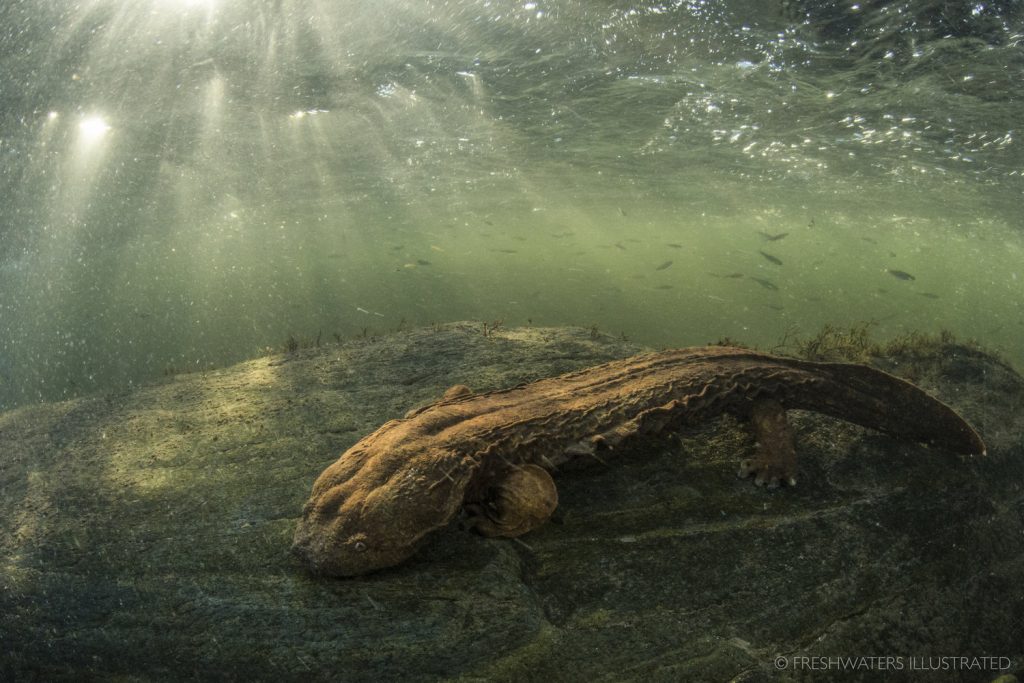
Eastern hellbender. Photo by David Herasimtschuk
Have you ever seen a hellbender? OK, stop right there. What the heck is a hellbender? Well, let’s learn some cool hellbender facts.
They just happen to be the biggest salamander in North America, growing over 2 feet long. Living along the East Coast in fast-moving rivers, they are also called snot otters and lasagna lizards. Wow, this just keeps getting better.
Hellbender Facts
As North America’s largest aquatic salamander, they live as far north as New York and as far south as Alabama. In all 16 states in which they are found, hellbenders are listed as threatened or endangered. But where you see one, you know the stream is healthy since they require extremely clean, fast-moving water in order to thrive.
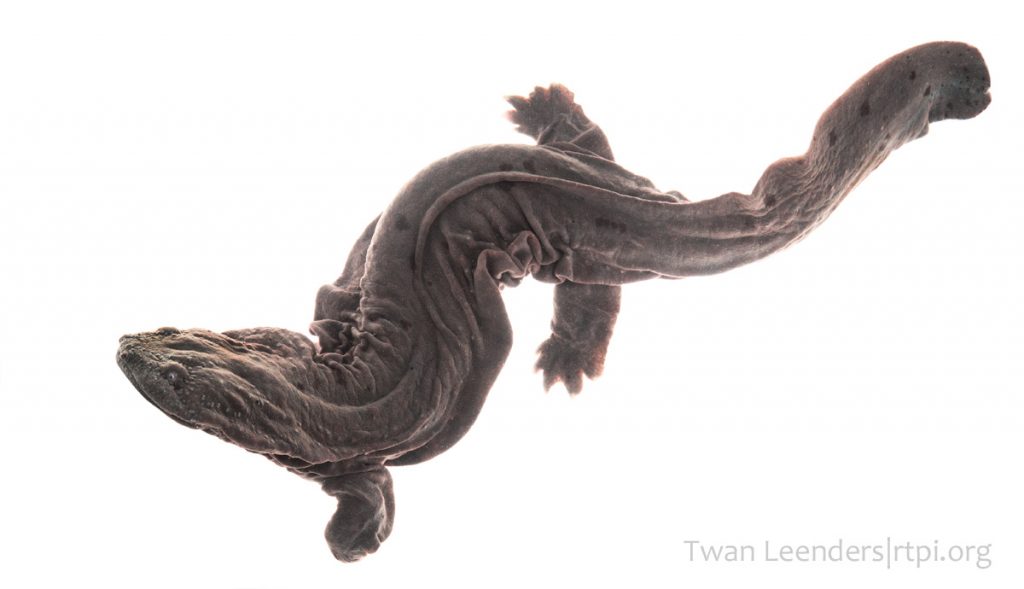
Hellbenders breath through their skin. Photo: Twan Leenders
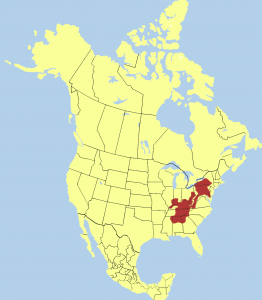
Hellbender populations
Some other cool hellbender facts.
- They have 4 toes on the front legs but 5 toes on the back legs.
- While hellbenders do have lungs, they breathe through their skin. Their lungs, however, help them with buoyancy.
- The males protect the nest of eggs for over two months until they hatch. But sometimes they eat the eggs, which is not so cool.
- Unlike other salamanders, they can not regenerate their limbs if one is accidentally lost.
- They are not poisonous. This is one of the many myths surrounding hellbenders. If cornered, they might bite, which we think is a perfectly reasonable thing to do.
Falling In Love With Hellbenders
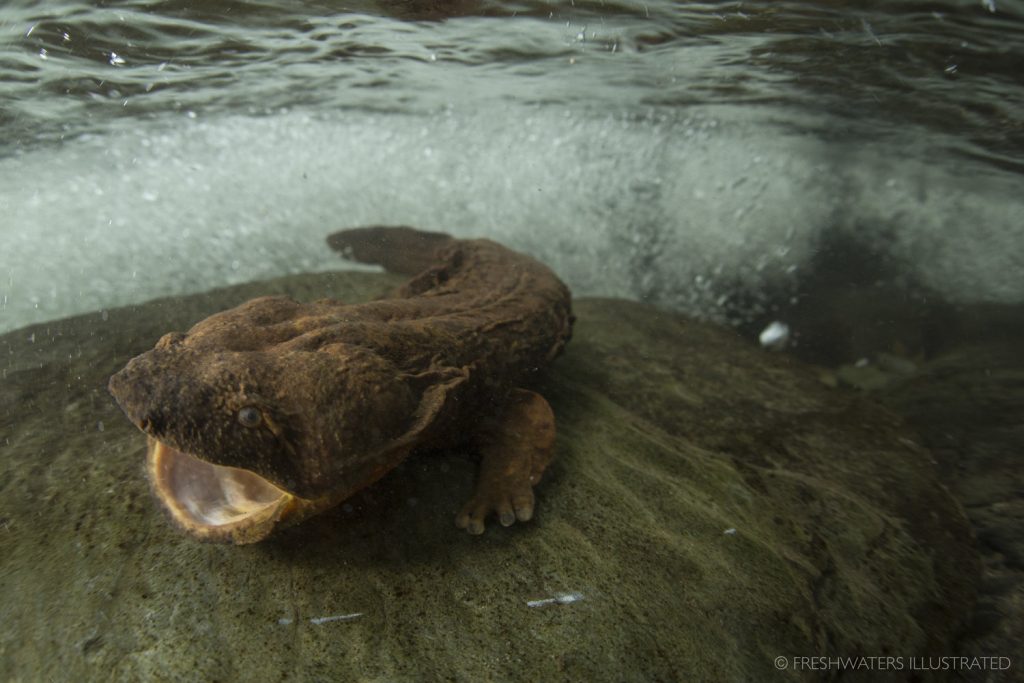
An Eastern hellbender hunting for food. Photo: David Herasimtschuk
We fell in love with hellbenders upon first seeing them in a video, “The Last Dragons, Protecting Appalachians Hellbenders” in early 2016. Dale was so inspired, he carved a stone sculpture of a hellbender in its rock house, called “Hellbenders Rock” which is now installed at the NC Zoo in a newly remodeled hellbender/native fish exhibit.
And we were thrilled to see a live one at both the WNC Nature Center in Asheville, NC and the NC Zoo. Several organizations are currently trying to protect and breed them for release into the wild which is very exciting.

Dale with his sculpture Hellbenders Rock at the NC Zoo.
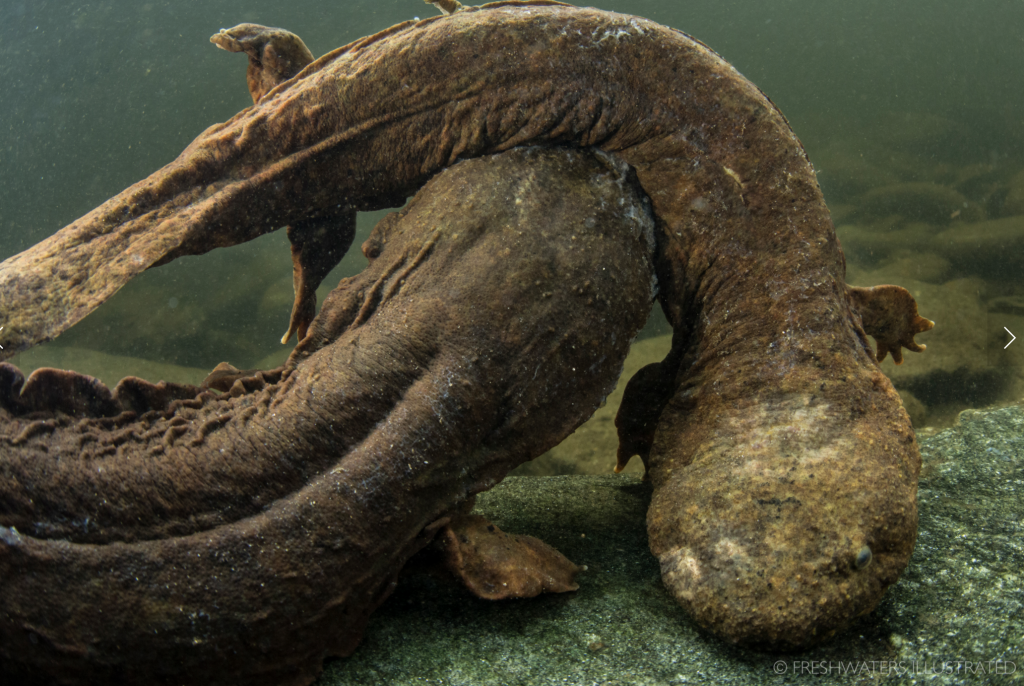
Two eastern hellbenders fight over territory. Photo: David Herasimtschuk
The Biggest Threats To Hellbenders
Hellbender populations have declined dramatically over the last few decades. The biggest threat to hellbenders is the loss of habitat through the siltation of the streams in which they live and water contamination.
Silt smothers not only the hellbenders but their prey (crayfish, minnows, and insects). It also buries their eggs and fills up the holes in which they live. Considering they breathe through their skin, any toxins in the water from chemical/pesticide runoff or untreated sewage can be deadly.
How Can We Help?
Please don’t move stones in a river. it may look cool, but you could be destroying the home of a hellbender. Wreck their house (read our blog Hellbender Homewrecker, Not Me!) and you may be setting the hellbender up to die. Yikes!
Talk to everyone you know about keeping pesticides, fertilizers and other pollutants out of rivers.
If you hook a hellbender while fishing, cut the line to release it so you don’t hurt it. The hook will eventually fall out.
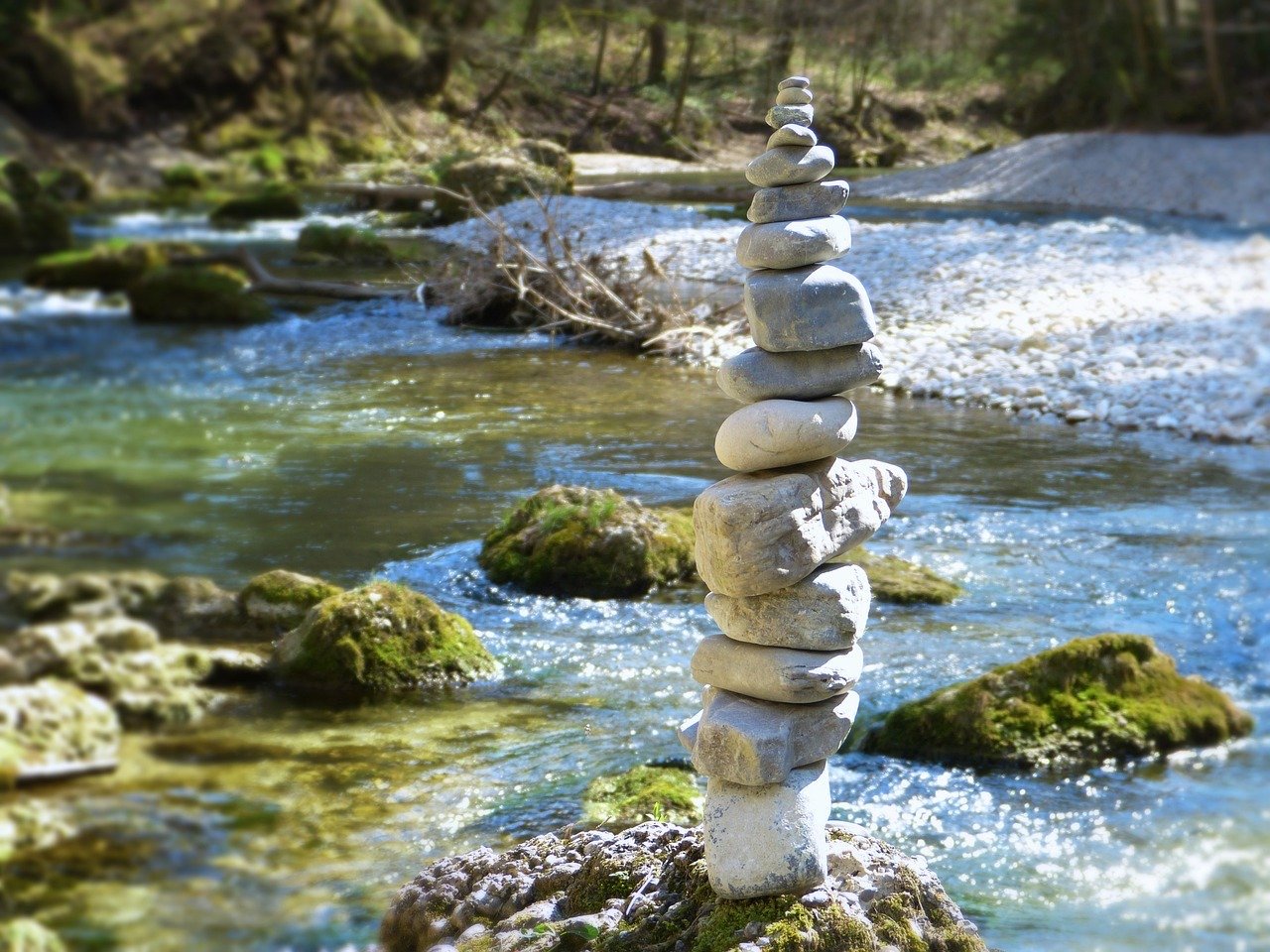
Stacking stones in a river could be destroying a hellbender’s house
Learn More
- NC Zoo
- WNC Nature Center
- National Geographic Article: US Giant Salamanders Slipping Away: Inside the Fight to Save the Hellbender
- Defenders of Wildlife Blog: Swimming with Giants
